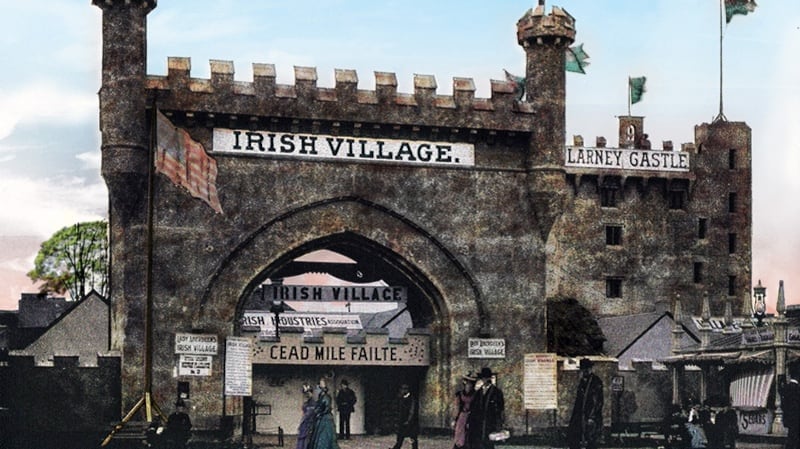Irish studies has blossomed as a discipline over time. This flowering took root with the emergence in the 1960s and 1970s of “area studies”, or area-based programmes, which emphasised that knowledge of the literature, culture, history and diversity that shape and mould various cultures and disciplines should form an essential ingredient of university courses. Hence, French studies, peace studies, women’s studies, European studies, and postcolonial studies, to cite but a few examples, all came to the fore and proposed a broader menu for students’ delectation than had previously been the norm.
In the case of Irish studies, the establishment of highly respected academic journals such the Irish University Review, Études Irlandaises and Éire/Ireland during this nascent phase provided a crucial platform for the dissemination of scholarship in the field. And of course the highly respected Jesuit quarterly, Studies, had been in existence since 1912 and was (still is) a forum where many of the intellectual debates surrounding Irish literature and society were conducted.
Alongside these developments, from the 1960s onwards, especially in the United States, a heightened awareness of all things Irish began to reveal itself. The term “Irish studies” became part of the lexicon without people knowing exactly what it meant. Among its constituent parts one most commonly found literature (in Irish and Hiberno-English), history, the postcolonial experience, the diaspora (especially Irish America), religion, politics, sociology and comparative studies. The remit is a lot more expansive now.
Writing in the Golden Jubilee issue of the Irish University Review (Spring/Summer 2020), editor Emilie Pine made the point that Irish studies “has no founding charter, no list of commandments, or global constitution. It emerges from the interests of individuals and groups, and it will always reflect the times, in terms of what it includes, and also what it excludes.” This observation underlines the hazards of predicting where the future of Irish studies might lie. The zeitgeist can change from day to day, the main actors in the area often being replaced by younger academics with new ideas and methodologies. That is in the natural order of things and has the definite advantage of bringing fresh perspectives and opening up new vistas and methodologies.
Reimagining Ireland
It is out of this backdrop that the series Reimagining Ireland began its life in 2008, when the first call for proposals was sent out. The goal was to commission books that would look at all aspects of Ireland’s past and present, while also having an eye to the future. There was an inherent expectation that authors should adopt a multidisciplinary approach and cover areas within Irish studies that may have been previously neglected.
The first book, by Eugene O’Brien, carries the provocative title Kicking Bishop Brennan up the Arse: Negotiating Texts and Contexts in Contemporary Irish Studies. O’Brien’s stated ambition was to reconsider Irish studies “through the medium of literary and cultural theory”, a goal that chimed with the thrust of the series to reimagine the concepts of Ireland and “Irishness” by using as many lenses as possible. O’Brien’s title is taken from a famous episode in the popular TV series Father Ted, which foreshadowed the massive decline of the authority and status of the Catholic Church in the “symbolic order” of contemporary Ireland.
Reaching the milestone 100th volume in the series has led to the publication of a special edited collection, Reimagining Irish Studies for the 21st Century, which casts a “forward look” (as opposed to what Frank O’Connor once referred to as the “backward look”) at how Irish studies might evolve in the third millennium. It will be a broad church if the contributions are anything to go by.
With a foreword by Declan Kiberd, probably the leading figure currently in Irish studies, the volume also contains essays by other established experts and emerging voices in the area. Literature, critical theory, sport, the Irish language, food and beverage studies, cinema, women’s writing, Brexit, religion, the legacy of the Great Famine, Northern Ireland, archival research, musicology and Irish studies in North America are all covered, among others – there are 21 chapters. Unsurprisingly, the scope and diversity in this compilation is very much in sync with titles published in Reimagining Ireland over the past 12 years or so.
Urban and rural
Predictably, the topic that has featured most frequently in the series to date is literary studies of one form or another. There have been monographs on figures such as John Banville, Paul Muldoon, John McGahern, Colm Tóibín and Yeats, and the first book-length study of Frank McCourt. In addition, there are nine essay collections dedicated to specific writers, the most recent dealing with poet and fiction writer Mary O’Donnell.
Among the more general literary topics covered are culture wars and the Abbey Theatre; women writers; literary representations of Catholicism; urban and rural landscapes in modern Irish literature and culture; fictions of the Land War; dance in contemporary Irish drama; community politics and the peace process in Northern Irish theatre; the short story; the year 1798 in 20th-century fiction and drama; writing slums; theatre and popular song; and theatre archives.

Matters pertaining to the Irish language are dealt with in four books. Interestingly, John Walsh’s Contests and Contexts: The Irish Language and Ireland’s Socio-Economic Development, which challenges the commonly held view that the Irish language is an obstacle to Ireland’s economic development, was by far the bestselling book of the first 50 volumes in the series – perhaps illustrating indirectly the validity of the position adopted by the author. Clearly, Walsh’s monograph broke new ground and struck a chord with people, as did Irene Luchitti’s study of the hidden life of Tomás O’Crohan, author of the iconic Blasket memoir, An tOileánach.
Among the other main thematic clusters are books that place Ireland in critical dialogue with other societies and cultures. Chief among these comparators would be France, with five books, but Ireland is also considered in relation to Argentina, the Czech lands, Scotland, Poland, Germany, Spain and the Nordic countries. Film and cinema account for four books and advertising is the subject of two monographs, one dealing with culture and Irishness, while the other looks at the brand that is Guinness.
Perspectives on globalisation
Single-subject studies include cultural identity within and beyond Ireland; cultural perspectives on globalisation and Ireland; a history of Irish ballet, 1927-1963 (the first of its kind); the Irish Free State and the Liberation of France; Ireland and the world of the 1950s; visualising Dublin; Ireland and popular culture; global legacies of the Great Famine; authority and crisis; the Fenian invasion of Canada in 1886; new perspectives on Irish TV series; Irish studies and the dynamics of memory; reimagining Irish folklore; the life and work of the liturgical artist Richard King; trauma and identity in contemporary Irish culture; new materialist encounters in contemporary arts, culture and politics in Ireland; travel narratives of the Famine; and memorialising the Magdalene Laundries.
Many authors cross generic boundaries and embrace the transdisciplinary opportunities that research in Irish studies facilitates and encourages. Whereas other book series have dealt with, and continue to cover, defined, specialised aspects of Irish studies, Reimagining Ireland accommodates the ever-expanding nature of the discipline under the one roof, as it were. A good example of this would be the 2014 collection, Tickling the Palate: Gastronomy in Irish Literature and Culture, which constitutes the first academic study of Irish gastronomy. The popularity of this book is undoubtedly linked to the keen interest that exists among the general public for anything related to food.
Another important volume, Recalling the Celtic Tiger (2019), features 123 separate entries on a sample of the main actors, aspects, events and consequences of the Celtic Tiger period. It reached a more general readership than is usually achieved by an academic title, assisted greatly in achieving this goal by retailing at €25, something which, as series editor, I am committed to pursuing in future publications – the 100th volume is also priced at €25.
Creativity theorised
The Reimagining Ireland Reader – a selection of essays from the first 50 volumes in the series – was launched in IT Tallaght in February 2018, with President Michael D Higgins in attendance. In his introduction, David Lloyd notes that “to reimagine Ireland is at one and the same time to bring forward what was already there but occluded by the official narratives in play at any moment”.
According to Lloyd, Ireland had a great capacity, historically, to generate creative works that others would theorise. Such a role relegated the country to the colonial periphery, “the ragged western edge” of that particular world. Lloyd concluded: “it has been the work of the last decades, however, and the work of Reimagining Ireland as a series, to theorise Ireland from our own location”. Such a ringing endorsement from one of the leading Irish studies scholars is a source of inspiration and encouragement as we contemplate what the future holds for an area that continues to grow in Ireland and across the world.
Reimagining Ireland will play a significant part in shaping the future of Irish studies. There is no reason why the next decade will not see 100 more volumes published in the series, and it is my expectation that the insights contained in these books will contribute substantially to Ireland’s understanding of itself in all its myriad dimensions. One thing is certain: by 2030, the appearance, reality and multiple meanings of Ireland will have changed considerably. Irrespective of the nature and effects of unknowable global events, this 100th volume marks a shared ambition to honour Irish studies’ foundational commitment to revealing and renewing Irishness within and beyond the national space.
Eamon Maher is general editor of the Reimagining Ireland series and director of the National Centre for Franco-Irish Studies in TU Dublin. The special 100th volume is being launched at 5pm today by Zoom



















